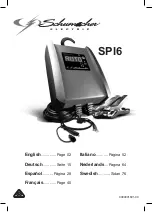
198
STARTING AND OPERATING
CROSSING DITCHES, STREAMS, SHALLOW
RIVERS OR OTHER FLOWING WATER
Flowing water can be extremely dangerous. Never attempt
to cross a fast running stream or river even in shallow
water. Fast moving water can easily push your vehicle
downstream, sweeping it out of control. Even in very
shallow water, a high current can still wash the dirt out
from around your tires putting you and your vehicle in
jeopardy. There is still a high risk of personal injury and
vehicle damage with slower water currents in depths
greater than the vehicle's running ground clearance.
You should never attempt to cross flowing water which
is deeper than the vehicle's running ground clearance.
Even the slowest current can push the heaviest vehicle
downstream and out of control if the water is deep enough
to push on the large surface area of the vehicle's body.
Before you proceed, determine the speed of the current,
the water's depth, approach angle, bottom condition and
if there are any obstacles. Then cross at an angle heading
slightly upstream using the low and slow technique.
After Driving Off-Road
Off-road operation puts more stress on your vehicle than
does most on-road driving. After going off-road, it is always
a good idea to check for damage. That way you can get any
problems taken care of right away and have your vehicle
ready when you need it.
Completely inspect the underbody of your vehicle.
Check tires, body structure, steering, suspension,
driveline, and exhaust system for damage.
Inspect the radiator for mud and debris and clean as
required.
Check threaded fasteners for looseness, particularly
on the chassis, drivetrain components, steering, and
suspension. Retighten them, if required, and torque to
the values specified in the Service Manual.
Check for accumulations of plants or brush. These
things could be a fire hazard. They might hide damage
to fuel lines, brake hoses, axle pinion seals, and
propeller shafts.
After extended operation in mud, sand, water, or
similar dirty conditions, have the radiator, fan, brake
rotors, wheels, brake linings, and axle yokes inspected
and cleaned as soon as possible.
NOTE:
Inspect the clutch vent holes in the manual transmission
bell housing for mud and debris and clean as required.
If you experience unusual vibration after driving in
mud, slush or similar conditions, check the wheels for
impacted material. Impacted material can cause a
wheel imbalance and freeing the wheels of it will
correct the situation.
WARNING!
Never drive through fast moving deep water. It can push
your vehicle downstream, sweeping it out of control.
This could put you and your passengers at risk of injury
or drowning.
WARNING!
Abrasive material in any part of the brakes may cause
excessive wear or unpredictable braking. You might not
have full braking power when you need it to prevent a
collision. If you have been operating your vehicle in dirty
conditions, get your brakes checked and cleaned as
necessary.
23_JT_OM_EN_USC_t.book Page 198
Содержание GLADIATOR 2023
Страница 110: ...108 GETTING TO KNOW YOUR INSTRUMENT PANEL GASOLINE INSTRUMENT CLUSTERS 23_JT_OM_EN_USC_t book Page 108 ...
Страница 111: ...GETTING TO KNOW YOUR INSTRUMENT PANEL 109 3 23_JT_OM_EN_USC_t book Page 109 ...
Страница 113: ...GETTING TO KNOW YOUR INSTRUMENT PANEL 111 DIESEL INSTRUMENTCLUSTERS 3 23_JT_OM_EN_USC_t book Page 111 ...
Страница 114: ...112 GETTING TO KNOW YOUR INSTRUMENT PANEL 23_JT_OM_EN_USC_t book Page 112 ...
Страница 361: ...SERVICING AND MAINTENANCE 359 Power Distribution Center Location Gas Engine 8 23_JT_OM_EN_USC_t book Page 359 ...
Страница 362: ...360 SERVICING AND MAINTENANCE Power Distribution Center Location Diesel Engine 23_JT_OM_EN_USC_t book Page 360 ...
Страница 417: ......
Страница 418: ......
















































